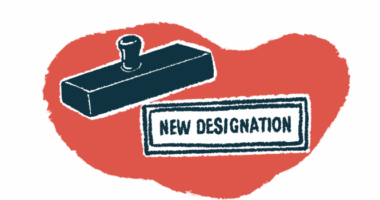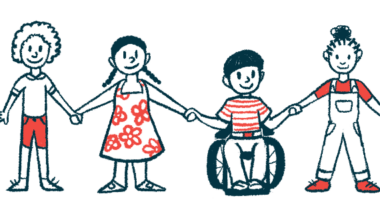
Approved Treatments for Dravet Syndrome
Ativan
Ativan (lorazepam) is a type of benzodiazepine, a medication that affects nerve signaling in the brain. It works by enhancing the effect of an inhibitory neurotransmitter or cell signaling molecule called gamma-aminobutyric acid (GABA). GABA works to reduce the excitability of neurons, in effect “turning down” the signal emitted by nerve cells and decreasing the output nerve signal. Therefore, it can be used to diminish seizure severity and end prolonged seizures in Dravet syndrome patients.
Depacon
Depacon (sodium valproate) is an injectable anticonvulsant medication that may be used to manage seizures in children with Dravet syndrome. The exact mode of action of Depacon is unknown, but it is thought to increase the levels of GABA, the neurotransmitter or chemical messenger that GABA neurons use to send signals, and enhance its action in the brain. This helps return the excitation and inhibition balance in neurons and reduce the chance of a seizure developing.
Diacomit
Diacomit (stiripentol) is an anticonvulsant medication used as an adjunctive, or add-on, therapy to Onfi (clobazam) or Depacon (sodium valproate) for Dravet syndrome. Diacomit has two different mechanisms of action: The first is an effect on GABAA receptors, and the second is to inhibit an enzyme called cytochrome P450. When Diacomit is used as add-on therapy, clobazam levels in the blood are higher and the treatment can be more effective.
Diastat
Diastat (diazepam rectal gel) is a rescue medicine used in emergency situations to stop acute repetitive seizures and is approved for the treatment of refractory seizures. It works by binding to one class of GABA receptors called GABAA receptors and mimicking GABA’s action. In Dravet syndrome patients, it is commonly used to quickly stop a seizure before it progresses to status epilepticus. It is not intended to replace daily anticonvulsants.
Epidiolex
Epidiolex is an oral cannabidiol solution developed to treat seizures in patients with Dravet syndrome and Lennox-Gastaut syndrome. Epidiolex is a plant-derived cannabidiol, a non-psychoactive marijuana extract, which means it does not have the mind-altering effects that are characteristic of delta (9)-tetrahydrocannabinol (THC). Researchers suggest the treatment’s effectiveness is through its ability to interact with many other non-cannabinoid receptors.
Fintepla
Fintepla (fenfluramine) is an add-on treatment for Dravet syndrome. The oral medication is a low-dose solution of fenfluramine hydrochloride, which is taken with other anti-epileptic treatments to lower the frequency of seizures. Researchers initially thought that fenfluramine reduced seizures by affecting serotonin signaling in the brain, but more recent research suggests it acts on sigma receptors, a type of cell membrane receptor common in nerve cells.
Keppra
Keppra (levetiracetam) is an anticonvulsant therapy available by prescription as oral tablets and an injection in slow-release and immediate-release formulations. Keppra has been approved as an add-on treatment for partial, myoclonic, and tonic-clonic seizures. It is also used to treat seizures in Dravet syndrome, usually in combination with other anticonvulsant therapies. It is thought to work by binding to a protein called synaptic vesicle protein 2A.
Klonopin
Klonopin (clonazepam) is an anticonvulsant medication that is used to control various types of seizures and panic attacks. It works as a GABA agonist, or a molecule that acts in the same way as GABA, and is thought to help Dravet syndrome patients by compensating for the unbalanced activity of GABAergic neurons.
Midazolam
Midazolam is an oral benzodiazepine given to children before a medical procedure to relieve anxiety. It also can be used as a rescue medicine to stop a seizure before it progresses to a medical emergency. It acts on the brain by binding to GABA-A receptors and enhancing the effect of the inhibitory cell-signaling molecule GABA. This causes brain cells to become less excitable, stopping the seizure. Nayzilam is an inhaled formulation of midazolam.
Onfi
Onfi (clobazam) is a benzodiazepine used as an add-on therapy to treat Lennox-Gastaut syndrome, an epilepsy disorder affecting children. Onfi can also be used to reduce the severity of seizures in children with Dravet syndrome, usually in combination with another anticonvulsant such as Depacon (sodium valproate). It works by binding to a receptor protein found in neurons called GABA, increasing the flow of charged particles into the neuron, and preventing overactive nerve signaling and subsequent seizure activity.
Topamax
Topamax is often the first type of anticonvulsant medication used to treat Dravet syndrome and is aimed at preventing seizures from occurring. It is thought to work by increasing the activity of a neurotransmitter called GABA, which normally works to inhibit neuronal activity. This therapy cannot be used as a rescue medicine to stop a seizure once it has already started.
Zonegran
Zonegran (zonisamide) is an oral anticonvulsant that may be of benefit to Dravet syndrome patients whose seizures are treatment-resistant. It is approved as an adjunctive therapy to treat partial seizures in adults with epilepsy. How this medication prevents seizures is not yet fully understood, but it is thought to exert its anticonvulsant effects by acting on sodium and calcium channels, and by enhancing factors that suppress the excitability of nerve cells.



